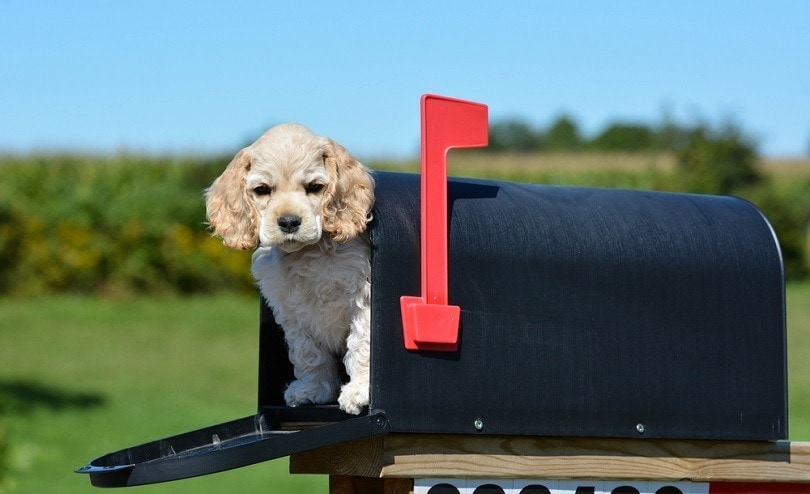German Shepherd Dogs (GSDs), like most dogs, use their tails as a key means of expression. Sometimes, they can develop issues with their tails, either from genetically predisposed issues or from injury. Unfortunately, when it comes to purebred dogs like German Shepherds, there are genetically predisposed illnesses that you may have to deal with as their owner.
Getting your German Shepherd from a reputable breeder is the best course of action, but even then, your GSD will still not be entirely immune from genetic issues nor injuries. Tail problems are common issues in large dogs like German Shepherds. In this article, we look at three that you should know about. Let’s dive in!
The 3 Common Tail Diseases In German Shepherds
1. Anal Furunculosis
Anal furunculosis is a hereditary condition in German Shepherds. The condition is characterized by skin inflammation and ulceration under their tail and around the anus and is a result of your GSD’s immune system not operating properly. The condition can be painful and uncomfortable for your pooch and is difficult to treat. It can become fairly severe if infection takes hold. The disorder can affect your GSD’s defecation because it can become very painful, and the treatment of the condition can be uncomfortable too. The condition is found in other dogs but is most common in German Shepherds — 84% of cases are in GSDs.
The condition must be diagnosed by a vet and is commonly treated using chronic medication, like Cyclosporine (2–10 mg/kg daily), and immunosuppressive drugs, such as Azathioprine and Prednisolone, although these are less effective.
2. Limber Tail Syndrome
Limber Tail Syndrome is characterized by the hanging of your dog’s tail limply from its base, accompanied by pain and discomfort. The condition can be brought on by several different causes but has mostly been observed after immersion in cold water. The condition is not usually serious and can be treated at home with anti-inflammatories and rest, and your dog should fully recover after a few days.
3. Skin Infection
Skin infections are fairly common in GSDs and are often found at the base of your German Shepherd’s tail. Skin infections are easily spotted because there will typically be hair loss, redness, and itching. If you’ve noticed your GSD incessantly chewing or gnawing at their tail, it may be because there is an itch that they are trying to scratch. It’s best to try to stop them from gnawing or licking the infection because it can cause the wound to get bigger and worse.
Topical or internal antibiotics prescribed by a vet are usually the best course of action.
Other Dog Tail Issues to Be Aware Of
Other than the mentioned illnesses, there are other common tail issues in German Shepherds, including the following.

Dog Tail Chasing
It can be amusing to watch a GSD chase their tail, and if it happens occasionally, there is no issue. But the habit can become obsessive, at which point, you may have a problem. There are many causes for this habit, most of which are behavioral and thus can be stopped with proper training. Lack of exercise, insufficient space, stress, and anxiety may all be possible causes.
Curled Tail
A curled tail on a GSD is fairly common in GSDs and is a genetic issue that cannot be fixed. Luckily, the issue doesn’t cause any pain or discomfort to your dog and is purely cosmetic. Unfortunately, there are a few GSD owners who want their dogs to have the straight, powerful-looking tail of the GSD breed standard and opt for surgery, but this will not fix the issue and will cost a great deal of money in the process. Besides, a curled tail looks adorable and it’s best to leave it alone!
Excessive Tail Wagging
German Shepherds are known for wagging their tails all the time, and as such, they are fairly prone to tail-wagging-related injuries. This enthusiasm can cause them to knock their tails into things and cause bruises, cuts, or pulled muscles. Excessive tail wagging can be a symptom of stress or anxiety, but it is usually just due to a happy, excited pooch!
Conclusion: German Shepherd Tail
Your German Shepherd’s tail is a vital part of their communication and balance, and as such, it needs to be paid careful attention to. Several issues can arise concerning your GSD’s tail, only one of which is serious and will need chronic medication. As with any illness or injury, though, it’s best to take your GSD to the vet if you notice any tail issues.
Featured Image Credit: cvop, Pixabay








